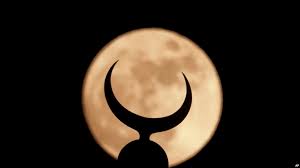
The moon is the sole celestial body that is moving around the earth, it is also the closest one to it; thus called its companion. It is 384401 kilometers far from earth and 50 times smaller than it, whereas it does not exceed both southern and Northern America.
Lunar Month
The moon moves around the earth within 27 days, 7 hours, 43 minutes and 11.87 seconds, which is known as the Sidereal Month. But after that period, the moon does not return to conjunction as earth then will be preceding it by around 27 degrees. Since the moon passes 13 degrees on average per day; then it needs more than two days to become in conjunction, thus the period for the middle lunar month becomes 29 days, 12 hours, 44 minutes and 2.87 seconds, which is not the period for conjunction lunar month, and that refers to various factors such as velocity of moon moving around the earth and changing the velocity of earth moving around the sun and retrograde both moon nodes while changing the celestial width of it.
Crescent Shape
Upon observing the crescent at the beginning of the lunar month or at the end of it we notice that the shape of the crescent (direction of opening) changes from one month to another and from the crescent of the beginning of the month to the end of the month. That change happens because of changing moon location compared to sun; whereas the crescent opening will always be in the opposite direction of the sun; i.e. the direction of sunrays.
In case the moon location at the beginning of the month is above the sun, it would be setting in the same location of sunset; the crescent opening will be to up, i.e. the crescent will be like the letter (ن) in Arabic. While in case the crescent is tilted to the south (to the left of observer) from sunset, then the crescent opening will be tilted to the left, just like the letter (ر), and the declination increases towards the south whenever the Azimuth Angle increases between the sun and the moon.
We must recognize a very significant astronomic issue, which is the direction of crescent opening at the beginning of the month; it is either up or to the left only and it is not possible to have crescent opening tilted to the right.
While at the end of the month; the crescent opening differs from the beginning of the month in case of tilting moon orbit from sun orbit. In case the location of moon rising was above the sun before sunrise; then the crescent opening will be up; and in case the moon location is to the right of the sun (south) then the crescent opening will be titled to the right.
Huge and High Crescent in the Sky
At the beginning of Ramadan and Eid of each year, we receive various calls from people doubting correctness of deciding the first day of Ramadan, Eid or Hajj, and most of them confirm that the reason of calling is that the crescent is thick and appearing hugely up in the sky; thus we are fasting in the wrong date not in compatible with the crescent condition.
It is known in astronomy and through our explanation about the moon orbit around the earth and changing its faces during the lunar month that the apparent side of the bright half of the moon depends on the lunar distance from the sun, and that whenever the moon gets far from the sun after conjunction; the apparent size would get bigger. Accordingly, after conjunction; the moon appears as a thing crescent and increases in thickness and size day after day until passing the first quarter, full moon in the middle of the month, then returns to decreasing until disappearing at the end of the month.
The moon passes around 13 degrees per day away from the sun and delays rising every day for around 52 minutes on average; as in case of rising at 6 PM today, then it will be rising at 6:52 PM tomorrow and so on.
For example, in case conjunction took place at 5 PM and sunset was in the same day at 7 then moon age at setting will be two hours, and as per the astronomic logic, crescent may not be seen and we have to wait for the next day for seeing the crescent. When we observe the crescent in the next day; it will be increased one day of age; thus it will be 26 hours of age and will appear high and thick in the sky.
Crescent might be of more age in case the hour of conjunction took place early. When the crescent appears at 2 AM and the sun sets at 7PM of the same day; then the moon will be 17 hours of age, which is not adequate for seeing it. When the public observe the crescent they will not see it and when observing it next day it will be 41 hours of age; thus it will appear high and notably huge in the sky and in that case people will say that we are fasting in the wrong date while missing one day of Ramadan and they start doubting! But they actually do not recognize that the moon age was huge in the previous day but was not seen for not fulfilling observation conditions.
In order to observe the crescent in naked eye or even in telescope; the following main conditions must be fulfilled:
- Conjunction: which is having the moon between the sun and earth. From astronomic aspect; the period of conjunction is determined when the center of the moon is on the same level between both centers of the sun and moon, which is called the Heliocentric Conjunction. The Celestial Longitude (Right Ascension), or the straight ascension lines are not equal for areas on earth; whereas the difference reaches in maximum four hours between any area and the other, and astronomers depend on this astronomic condition for determining the start and end of the new months, which is called the New Moon.
The conjunction hour is one for all parts of earth; considering that it takes the center of earth and not a specific geographic region. It is usually calculated in GMT and the time for each region is determined by adding to subtracting time difference of the country in case of being located to the east of Greenwich, while time is subtracted from Greenwich in case the observer is to the west.
The other type is Topocentric Conjunction, which depends in conjunction for a specific geographic area on earth on the coordinates of observer location. This case gives better images for crescent and observing it in the region; since it does not only depend on the center of the earth in calculating the birth of crescent; but also on the observer location. For example; in case the Topocentric Conjunction took place at 10 AM for Makka Al-Mokarrama and the sunset was at 6.15 PM in the same day; then calculating the moon age will be the difference between the time of birth and sunset, which is 8.15 hours. In case observer was in USA in the same day, where the sun did not rise yet; then the Topocentric Conjunction did not happen yet and he must wait until conjunction happens; whether the latitude of the sun and moon is equal. The observe solar eclipse is a good evidence and clarification for the Topocentric Conjunction; as when the solar eclipse happens, it is observed from specific areas on earth while not observed in others, and the areas witnessing solar eclipse are already the areas of Topocentric Conjunction, while the countries not observing eclipse but witnessed the centric conjunction, might have previous of later Topocentric Conjunction and in all cases the difference between its timing and the time of centric conjunction does not exceed four hours maximum.
It is impossible to see the new moon before conjunction. Ibn Taimiyah indicated that the one observing the crescent before conjunction will be just like the person seeing sunrise at dawn, or a person seeing the newborn before birth. The sole case of witnessing the moon upon conjunctions is the solar eclipse; whereas the moon is clearly seen passing in front of the sun, whether in partial or total eclipse.
The time of moon being in conjunction may be determined using the astronomic calculations accurately especially with introducing computer that may calculate time of new moon even with parts of seconds for the next thousands of years.
- Moon Age: it means the period between conjunction and sunset, for example in case the time of conjunction is 11.59 PM, and the sunset was at 5.59 Pm, then the new moon will be 6 hours of age.
According to the studies and astronomic standards set by scientists, in order for the human eye to be able to see the crescent; the crescent age shall be not less than 16 hours minimum, while for observing it using telescope; then the crescent age shall be 22 hours; plus or minus 2 hours according to weather condition. Through continuously observing the crescent of lunar months; the one who said that the best time for observing crescent is 22 hours is probably accurate; since the youngest crescent observed till now was on 25/2/1990 in USA with the age of 15 hours and 33 minutes.
- Staying crescent: the period of crescent stay above the west horizon after sunset while allowing to observe the crescent. Scientifically it was found out that in order to see the crescent; it must stay after sunset for at least 40 minutes and the truth is that I’ve observed the crescent several years ago at the beginning of each lunar month and found out that observing the crescent would be very difficult in case of crescent stay was less than 40 minutes even through telescope and that any person can observe the crescent of each lunar month. The crescent of Moharram in 1412 Hijri stayed for 42 minutes after sunset and I could not observe it except through the binocular and it was very difficult; whereas the twilight accompanying sunset was hiding it; it appeared very thin and was difficult to differentiate it from the surrounding sky.
The least stay of crescent seen by naked eye was in Palestine on 20/09/1990 AD.
- Crescent width: some people, even astronomic amateurs, think that the crescent directly stars from conjunction, but this is not true and not even scientific; thus we must confirm that crescent is formed upon conjunction rather than a period of time must pass in order for the moon to get far from the sun and form its light. The see arc is the seen size of the moon, relatively to the seen crescent light; which is one of the most important factors to be fulfilled in order to see the crescent; as it might be very thin and difficult to be seen. It was found out that the crescent lighting percentage must be not less than 0.01 noting that the full moon is of 1.00 percentage of lighting, and the astronomic calculations may be able to determine the crescent lighting accurately in any place on earth at moment of observation. The crescent thickness depends on the moon age from moment of conjunction in addition to other factors, as the moon age might be long but the lighting of the seen arc might be little; while moon age might be shorter but percentage of lighting of seen arc might be relatively more; and the reason for that is the difference in celestial width between sun and moon; assuming the same age of the new moon. When the moon declination on horoscopes’’ line upon conjunction is big; then the percentage of lighting in the seen arc is little; but in case conjunction happened with little moon declination then the percentage of lighting in the seen arc will be higher.
- Crescent arc length: which is the value of new moon length. The person observing crescent at the beginning of the month sees it as very thin and not forming full arc and in most cases it forms a very thin line rather than a long one; which depends on the new moon age and height from horizon at moment of sunset in addition to the celestial width for the sun and moon.
- Elongation: which is the distance of moon from the sun; whereas the naked eye can distinguish the thin crescent from sunrays. The twilight accompanying sunset might clearly cover the crescent; thus it might be difficult to see it and it was scientifically found out that in order to see the crescent in the naked eye; the crescent must be far from the sun for at least 8 degrees; i.e. after around 16 hours from the new moon.
Altitude: which is the value of crescent height from the western horizon at the moment of sunrise. In case the crescent is close from horizon at moment of sunset; then observing the crescent in that case would be very difficult and the twilight will increase density in addition to the other weather conditions such as haze; which is the reflection of sunrays on the dust atoms especially in the western horizon before sunset or the mist; which is the percentage of humidity in weather that prevents observing anything above the horizon and hinder seeing the crescent. Astronomers found out that the crescent must be higher than the western horizon at moment of sunset for at least 6 degrees in order to be observed
 Cresents
Cresents 


